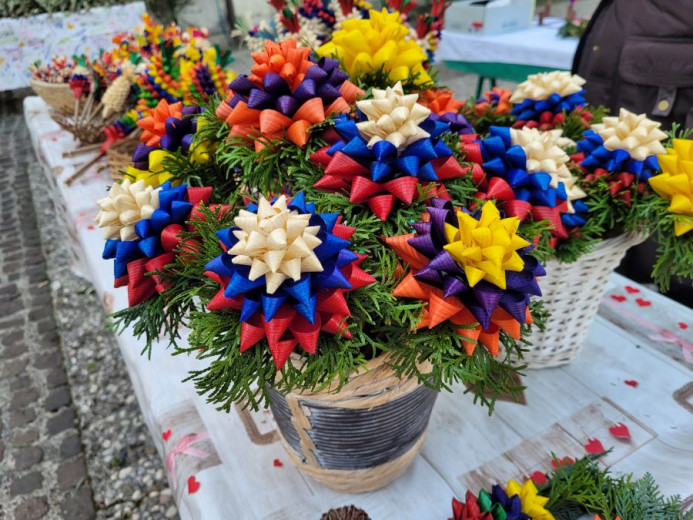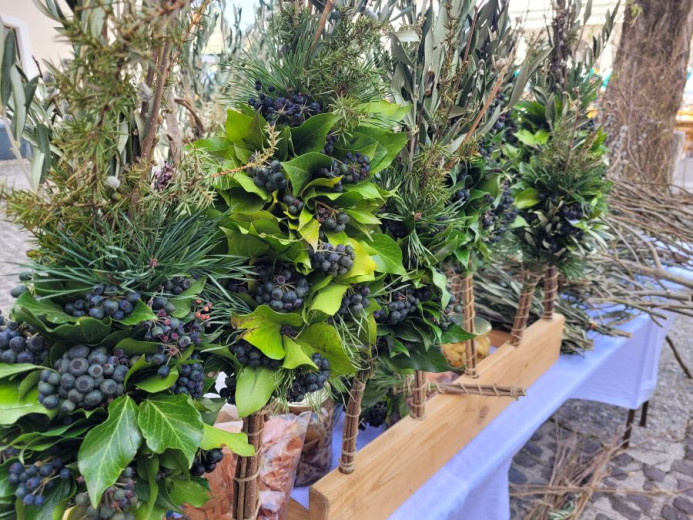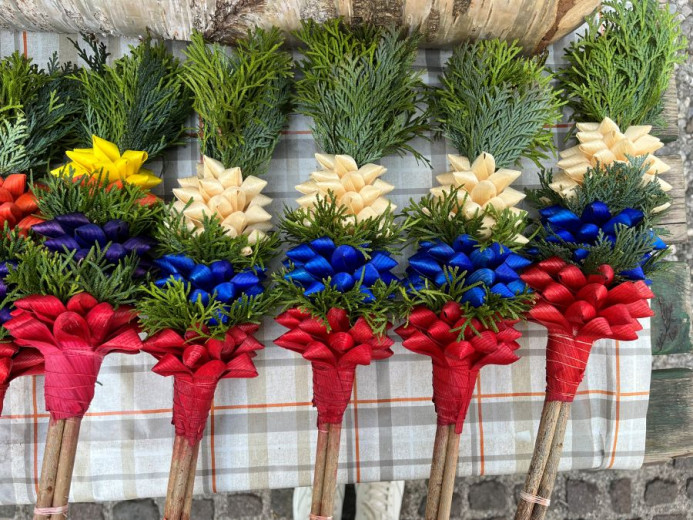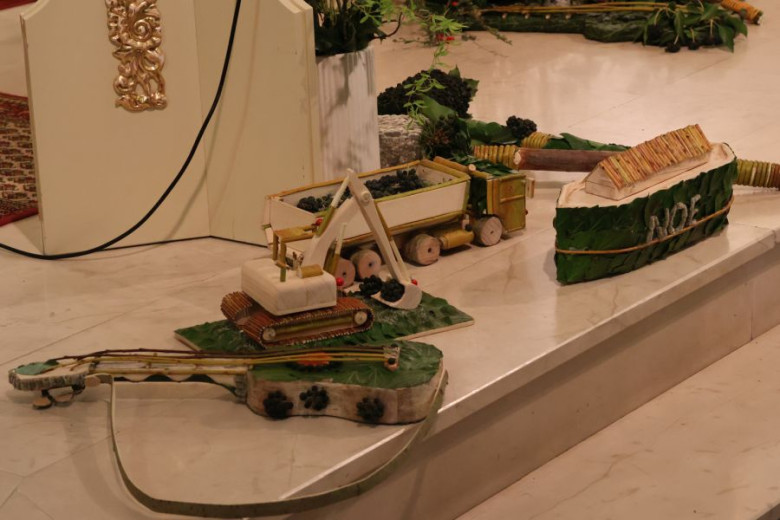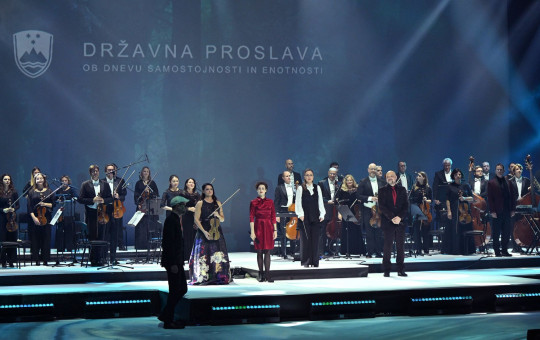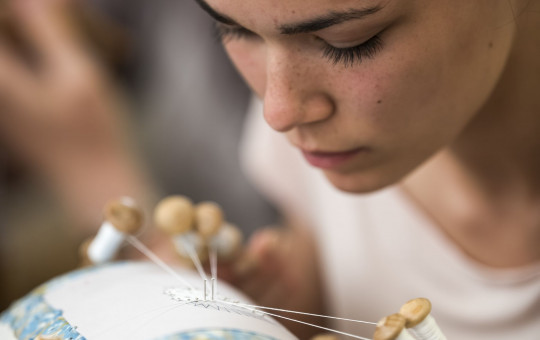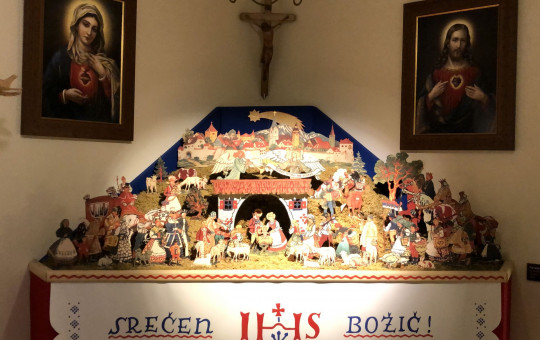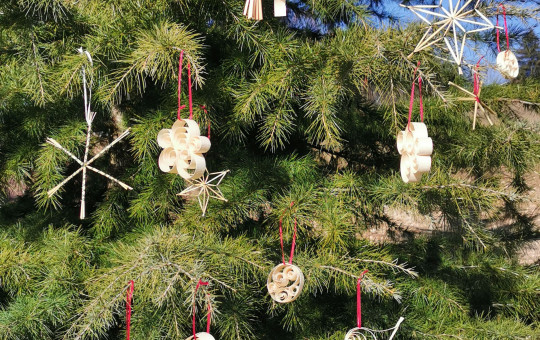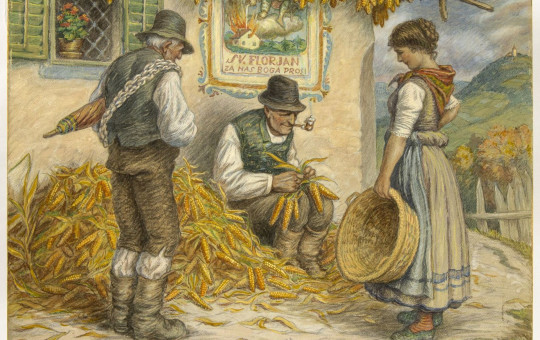Date: 11. April 2025
Time to read: 1 min
Palm Sunday marks the beginning of Holy Week and commemorates Christ's triumphant entry into Jerusalem. According to Slovenian tradition, people bring butarice or olive branches to church on Palm Sunday.
While some people buy them at local markets, others like to make their own. Butarice are a unique Slovenian tradition, rarely found elsewhere in the world. In most other countries, only simple olive or palm leaves are used for this purpose.
How butarice are made – and what they look like
The appearance and craftsmanship of butarice vary across different regions of Slovenia. They are usually made from evergreen plants, colourful wood shavings, moss, berry-bearing branches, and other decorations like oranges or various ornaments.
The base of the bundle can be made from branches of shrubs like hazel, catkin, elderflower, the wayfaring tree and Cornelian cherry.
The bundles are mostly made using three branches, with the exception of catkin bundles, where more branches can be used.
Other greenery bound into bundles includes žimberc (an evergreen that, in wreath form, represents Christ's crown), hazelwort (a flower with kidney shaped leaves and brown and purple flowers), representing the source of life, and boxwood, a symbol of suffering. Daffodils and forsythia flowers can also be used for decoration. A branch of a fruit tree growing at home (to make the tree bear fruit), hay (for the blessing of livestock) and maybe an apple or orange (for the blessing of people) can also be bound into the bundle.
The branches and greenery are usually tied together with white or multicoloured ribbons.
Ljubenske potice – traditional Palm Sunday bundles
According to tradition, these unique creations owe their name to a real event that is said to have taken place 130 years ago. In 1887, farmer Jože Poličnik from a small mountain village is said to have brought a bundle in the shape of a potica (a traditional Slovenian pastry) to be blessed.
Ljubenske potice are named after the butare that were once made from fine bread or pastry and decorated with greenery.
In the late 19th century, it became a tradition in the town of Ljubno for young men to compete on Palm Sunday to see who could bring the heaviest potica (bundle). These are not traditional bundles, but take on a variety of shapes. They are made at home using natural spring materials such as fresh fruit, greenery, bark, twigs and berries.
The designs, figures and motifs depicted in these bundles often represent tools and objects from farms, personal belongings, humorous scenes from everyday life or motifs from religious life.
They originated and developed only in this region, known for its timber trade and the associated tradition of log rafting.
Using butarica after Palm Sunday
Several different traditions have been preserved to this day. In some parts of Slovenia, the butarica is taken apart and the greenery is spread around the house. The greenery is also taken to the garden, the fields or the barn.
In other areas, after the blessing, the bundle is burned and the smoke is used to bless the whole house.
Will you be making your own butarica this year? You can follow the basic instructions, but it will only be truly unique if you add your own creative touch.

